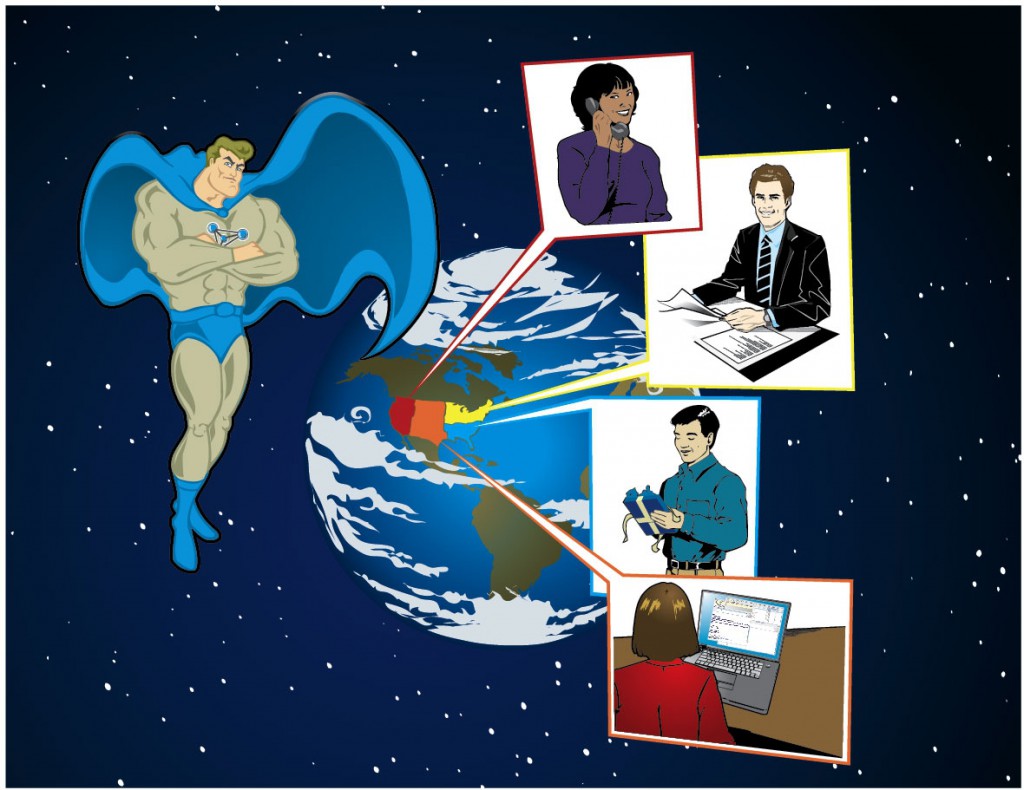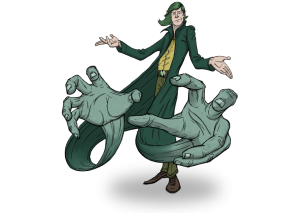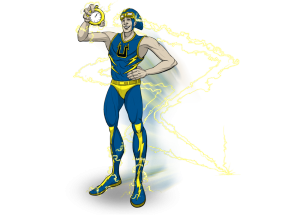I Just Wanted To….
I hate those four words! And you know what, so do your customers. Those words (and other variants) form the basis of the worst that lead generation and staying in touch with contacts has to offer. Whether it is on the phone or in person here are a few of the worst cringe inducing lead in’s
- I just wanted to say hi
- I just wanted to follow up because you said you would have an answer
- I just wanted to call because it is the (beginning/end of month, been a few weeks)
- I just wanted to check and see if you were in the market yet
- I just wanted to stop in and say hi, haven’t heard from you in a while
All of these examples rate WAY high on ”The UGH Factor” scale. You know ‘UGH’, the sound you hear from a customer when you “pop in” for a quick hello or “catch them” on the phone to check status. We HAVE to stay in touch with our suspects, prospects and customers, our business lives depend on it, but the question is how do we do that in a high value added way?
In The Beginning
Think back to virtually any good relationship you have, the last thing you wanted is that person DREAD you coming over or calling. Our challenge is to make our business relationships WANT to take our call or look forward to us stopping in unannounced. That is where the S.I.T. Nurture Prospecting System comes in.
First, we need to embrace the BIG 3: Relevance, Consistency, Timing and incorporate them into our entire touch strategy. Next we need to make sure we Personalize and Monetize everything that they see from us (please see previous post “Do You REALLY Know Your Customers?” for detailed explanation of both concepts).Once we have addressed these critical aspects, then we can start thinking about the touch process itself.
The Song of S.I.T.
Song is such a great metaphor for your S.I.T. System. Let’s look at the pieces that make up a song:
- Introductions help establish the key, tempo and mood of a song. You’ll know you’ve found a strong introduction when everyone recognizes the song after the first few seconds.
- Verses contains the story line and help answer the journalistic questions about who, what, when, where and why. They tend to be more or less the same from one verse to the next and yet they help move the listener along in an unfolding story.
- Bridges are connecting pieces or transitions from one part of a song to another.
- Refrains/Choruses usually deliver the essential messages, the payoff or the knock-out punch.
- Hooks are simply put the most memorable, distinguishable bit of the song.
- Breaks are a little relief from the song so far.
- Codas (or tags) are the special endings for songs.
Your S.I.T. elements are not that different
- Social Media Touches: No matter what you think of it, social media is a reality and is only getting bigger and more influential. Make sure that YOU and YOUR company have a positive image and are frequent contributors to the major sites of Linked-In, Facebook, You Tube and Twitter.
- Initial Contact Touches: Could be a letter, could be a phone call but you need to start the process strong, get in the door and get recognized. The great thing is, when done right, lightning can strike. Somebody could be in the market RIGHT now and because you called you can start them in the sales cycle immediately. Even better is when you get calls IN from your letter. I have customers that average a 20% call in rate from their initial mail touches. 1 Caveat: Never initialize contact with an email it has to be more personal to make a statement.
- Knowledge Touches: These could take the shape of articles, webinars/seminars in their industry, white papers or even ideas of websites your contact would find useful, but are NOT about you or your product. When chosen well, they paint the picture of of how you can help them through your selection of topical information. You can either mail or email these.
- Impact Touches: These are ‘creative’ ways to stay top of mind, such as a packet of seeds with a note that says “we help your business grow” or a simulated X-ray of an arm/leg on transparency stock and a note that says “is your manufacturing process broken?” I will even buy a good business book, Good to Great for example, and
 drop it off with a note that says “lots of great info for you.” These touches break you away from the norm and are fun to do as well. Primarily, these are delivered in person UNLESS there is value in mailing.
drop it off with a note that says “lots of great info for you.” These touches break you away from the norm and are fun to do as well. Primarily, these are delivered in person UNLESS there is value in mailing. - Bridge Touches: Sometimes you want to mix it up with a simple letter or email consisting of 1 idea that will prove useful. You can’t swing for the fences all the time, keep it fresh (and yes I know this one is actually named after an element of song.)
- Drop Off Touches: A combination of all of the above, the only difference is in the delivery. If you have an appointment in a business park make sure you bring along enough Drop Offs for the rest of the park. Make sure you L.T.L.R. (please click on read description in previous post) and get the info to the right people.
- Holiday Touches: Always remember you have ‘built in’ reasons to touch contacts, they’re called holidays. Don’t forget cards and letters on the big holidays like Christmas, St. Patrick’s Day and 4th of July, but also mix in the some of the less celebrated as well for example Arbor Day, Bosses Day and the 1st Day of Spring.
- Event Touches: Industry/topic specific webinars and seminars, that you or your company put on, should be part of the mix as well. Just remember these need to be INFORMATIONAL and not BLATANT COMMERCIALS. You should also look into events in your market space and submitting speaking topics for you to present.
- Status Touches: You didn’t think this was magic and you never had to pick up the phone again did you? The only difference is now, because of your efforts, you have a REASON TO CALL other that to say “I just wanted to check in.”
Now, by utilizing these touches, you have plenty of content to discuss during a Status Touch. There doesn’t have to be the ham-handed “I just wanted to.” Ask how they like the different pieces, what did they like most etc. Trust me, they know why you are calling, but you took GREAT strides to contrast yourself from the regular cold caller/drive-by caller. And it is the effort that will make all the difference in the world.
The implementation of these S.I.T. elements will help you to control the narrative of your company, influence buying behavior, guide your contacts to information that will impact their business, keep you top of mind in a very positive way and most importantly create the framework of a relationship that will based on mutual respect and not “I just wanted to……”
There you have it, an introduction to the universe of touch pieces for your S.I.T Lead Generation System. Our next post will lay out a sample schedule with some specific examples and we will talk about how to integrate into any existing lead generation efforts.
Until next time remember, you can either make sales or you can make excuses but you can’t do both!
Do You REALLY Know Your Customers?
I am reading the book Switch: How to Change When Change is Hard. The authors, Dan & Chip Heath pose a great question/analogy. There is 1 particular choice that people across our country make everyday that COMPLETELY alters everything in their life. They volunteer to change EVERYTHING about their present mode of living including, but not limited to:
- fracturing their sleep into 3-4 hour chunks of time
- how they spend their free time
- what they do with any spare money
- eating habits and much, much more
That 1 choice is parenthood. Why would people volunteer for such massive change? Anybody who has children already knows the answer to the question.
Now think about this in terms of your customers:
- Why would they make a change in their current situation?
- What would compel them to make a decision to move out of their comfort zone.
- What could possibly make them spend hours researching multiple options then spend the next few weeks to months of their lives meeting with, at minimum, 3 salespeople and telling their story over and over?
- All this just to take a chance and make a decision that could ruin their career with their company.
That is OUR magic question. THE question we must answer to A) educate our suspects/prospects/customers and B) sell them our products and services. The answer is, of course, to know and understand our potential customers by establishing REAL relationships.
So how do we begin a REAL relationship with people that we don’t know, but need to know to be a success? Lead generation of course, but how does a real relationship with potential customers start? It should be no surprise that it begins and ends in hard work, this is sales after all, but let me be much more specific.
L.T.L.R.
Learn To Love Research! (you all know I love my acronyms). I don’t care if it is online, at the library or experientially, you must research your potential market. You need to know what affects them on a daily basis, what situations (regulatory, legal, market based etc.) could change their business for the positive AND negative. You need to know the titles of your contacts and what those titles actually do. You need to know what their location geography means to their business. In short, you need to be an expert on your potential customers all BEFORE you send out 1 ‘touch’ from 1 lead generation campaign and this is just the beginning of the process.
Before They Are Customers
Before they are customers they are either suspects or prospects. I teach my clients to characterize status based on ACTIVE and DORMANT needs. Simply put, if a potential customer does not recognize they have a need, then DORMANT would be the classification and they’re what I call suspects. If recognition is present, they will have an ACTIVE need and they could be prospects. 1 caveat, this is the simplest description of suspects and prospects. There is more complexity to these definitions but for the sake of today’s discussion it is more than sufficient.
The BIG 3
Once your research is completed you need to develop your Touch Matrix. This consists of all the different type of touches you will be using to nurture the relationships with your clients. Some of the components to consider are letters, emails, social media, whitepapers, articles, 3rd party case studies, webinars and more.
The design, type and, most importantly, content of touches, that will be used, are dependent on the recently completed research AND the BIG 3:
- Relevancy
- Consistency
- Timing
All your content MUST be RELEVANT to your suspect/prospect/customer, their organization or best of all BOTH. It could be industry specific, job specific or personal specific, but it can’t be about YOU or your company. Remember relevance is like beauty, it is always in the eye of the beholder. So forget ‘special’ price lists, coupons or product announcements.
Once you start your S.I.T. Lead Generation System you can’t stop. You need to be CONSISTENT with your touches. If you are doing a good job getting your folks impactful content they will become addicted to it. If, for whatever reason, you stop ‘touching’ your folks they will reach out to find OTHER (see competition) sources for the same information. All your work thus far will be shot to pieces with the interesting side effect of degrading your reputation for reliability/customer service for good measure.
“TIMING is everything.” I am sure you have heard that before. It is every bit as true with your S.I.T. System. You need to know when your folks like to receive information and what events coincide with a touch from you. This is the art of appearing to be ‘coincidental’ on purpose. Mix up the releases of your info based on your research/experience and always keep your ears -eyes open for trigger events and potential tweaks to the system. The goal is being the person who is always on the tip of their tongue when they are talking to their associates or their superiors.
Personalize and Monetize
2 crucial mistakes that many people make when constructing their first S.I.T. System, is forgetting to PERSONALIZE and MONETIZE. Each piece has to be constructed from design to content to delivery system the way that will make the biggest IMPACT with individual PERSON who is our suspect/prospect/customer. It doesn’t matter what you like, it matters what they like. Don’t substitute something that you think “looks cool” if it contradicts all the research, experience and time you have invested.
“This is show business not show friends” said the character ‘Bob Sugar’ in Jerry Maguire. We must remember that everytime we touch our suspect/prospect/customers with needs to ring the ‘money bell.’ The people we contact don’t want fluff for fluff’s sake. They want something that will help them do their job better, something that will get them noticed by the boss or even improve a system at their facility. Always err on the side of getting people information that can be MONETIZED for real value at their job.
All righty then, that’s all for today. Next time we will continue to lay out the S.I.T Lead Generation System giving you more ideas to grow your business….
In the meantime, remember you can either make sales or make excuses but you can’t do both!
I am outta of here…..
The Birth of a SALE
8:06pm St. Patrick’s Day, my wife gave birth to our second child, Emily Elizabeth Kolencik. Thank you we think she is beautiful too.
This wondrous event got me thinking about when a sale really begins. Does it start when we research their company? Does it start when we call the suspect for the first time? Does it start when we do a presentation for the prospect? Or does it start with the first objection?
Cut it any way you want but the sale starts when the PROSPECT decides they have a problem. Not until that moment of “conception” do we have even the POTENTIAL for a sale. The trick is how do we get to be a part of the moment? Just because the prospect has decided they have a problem doesn’t mean they will automatically come looking for us. So how do we insert ourselves into the decision making process so the solution to their problem “looks” like our solution?
S.I.T. Lead Generation System
Back in my previous post Cold Call Once, Then Never Again... I started to lay out the basic concept for the S.I.T. System. Today we need to explain the philosophy behind the system. If you don’t know the why or buy into the why it doesn’t matter what the system is made of.
S.I.T. Lead Generation is a customer engagement system. It’s ultimate purpose is to deliver an ongoing stream of qualified leads to your sales team. What makes it uniquely effective is its ability to also deepen the relationship between suspect/prospect/customer and the company/salesperson. It has both cumulative and immediate impact in varying degrees based on strategy and tactics. But the key, at its heart, is building real interpersonal relationships. No matter what sales methodology you subscribe to, you can never escape the fact that sales is rooted in relationships with real people.
95%-5% Rule
Based on writings, research and books from as far back as Adam Smith, the father of modern economics, we have the 95% – 5% Rule. At any given time, only 5% of your potential market universe is actually looking for what you may be selling. This means they have made a conscious decision to look for a solution and guess what, it may NOT be your solution. When a prospect is actively pinging for a solution they are generally hit by an average of 7 potential vendors. All things being equal, 14.2% is the average chance you have of landing that prospect, the math is not good. But what of the 95%? The average number of potential vendors that stay in touch with them before they decide they need a solution is…. 1, just 1, I know it is unbelievable.
Research by Inc. Magazine stated in a survey 96%, of over 1000 sales people from a large range of industries, said that customer service is what differentiates them from their closest competitors. It further stated that 91%, of owners, decision makers and purchasing agents said the customer service they experience is BEST WHEN IN THE SELLING CYCLE… WOW! All of sudden those horror stories about salespeople abandoning their customers after a sale became true. The reality of this is if we do not find a way to reach out to the 95% we are forever doomed to be 1 out of 7 competitors and have a 14.2% chance on every potential sale. And if those are the facts, on the ground, what are we to do about it?
Staying In Touch
I know what you are going to say here “I do stay in touch and I always ask what new projects they are working on.” There is also the pop-in sales call replete with the old line “I was just in the neighborhood and thought I would check in.” These examples, my friends, are not a sales calls but BOOTY CALLS. Here’s some other examples: “our customers get regular emails and letters telling them about all our new products and specials” that true believers is advertising by BILL-BOARD. And perhaps my favorite is “we get them baseball tickets every year” do I have to tell you what that categorizes you as? You see in all these efforts it is the approach, method and mindset that is the problem.
We have to look at this through the prospect/customer prism, but we can take cues from OUR own behavior Do you like a salesperson calling when you are not in the market for something? What do you do with emails and letters that are blatant advertising? And that is how you need to look at S.I.T. We need to know what is relevant and important to our suspect/prospect/customer, information with personal value and monetary value. THAT is what they want to see.
- What is important in their industry?
- What can effect their own personal growth?
- What can help them do their job better?
- What is important to them in their personal life?
The answer to these questions, by the way, is NEVER “product information from our company. The bottom line is this, if we fail to take an interest in our customer’s business and personal life what reason do they have to take an interest in ours?
There is an old saying “Treat strangers like friends, friends like family and family like you can’t do without them, why, because you can’t!” This variation, that I coined, is the mind set that needs to rule your sales universe. “Treat suspects like prospects, prospects like customers and customers like you can’t do without them, why, because you can’t!”
All righty then, that’s all for today. Next time we will talk about the Big 3 of S.I.T. and 2 factors that you ignore at your own peril!
And remember you can either make sales or you can make excuses but you can’t do both!
I’m outta of here….
Archives
- May 2018
- November 2016
- June 2016
- April 2016
- March 2016
- February 2016
- January 2016
- February 2012
- January 2012
- December 2011
- October 2011
- August 2011
- July 2011
- June 2011
- May 2011
- April 2011
- March 2011
- February 2011
- July 2009
- June 2009
- May 2009
- August 2008
- June 2008
- May 2008
- April 2008
Categories
- A-Players
- Best Practice
- Change
- Cold Call
- Communication Skills
- Continual Development
- Critique Session
- Customer
- D.I.G.
- Drive
- Firing
- Guts
- Handling criticism
- Hiring and Assessment
- Hiring Dashboard
- Human Resources
- Intelligence
- interview questions
- Interviewing
- interviewing sales superstars
- Lead Generation
- Leads
- Motivation
- Naturally Curious
- New Contact Touches
- Position Contracts
- Proposals That Sell
- Prospects
- Reference Checks
- S.I.T. Blitz
- S.I.T. Nurture Prospecting System
- S.I.T. Touch
- Sales 3.0
- Sales Blitz
- Sales Management
- Sales Superstars
- Simulations
- Skill Sets
- Staffing
- Suspect/Prospect/ Customer Dynamic
- Suspects
- Talent and Traits
- Termination
- Uncategorized








